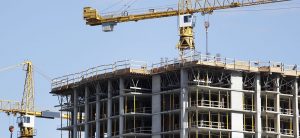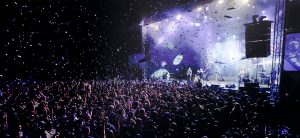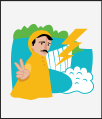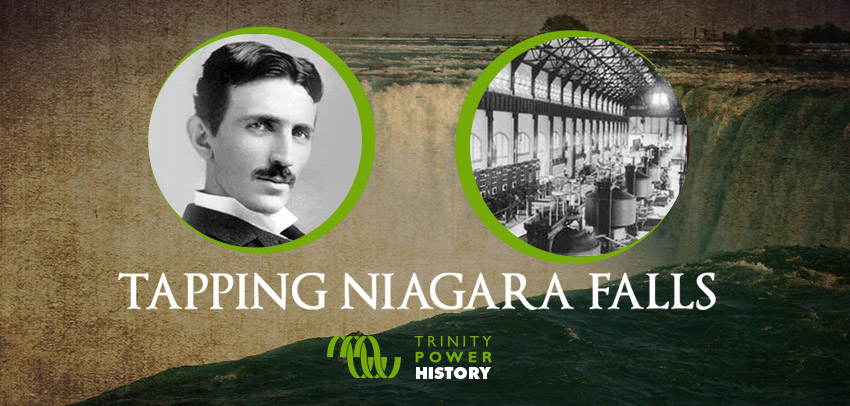- OUR APPROACH
-
COMMITTED TO YOUR SUCCESS
Our approach, developed over decades of experience, is fine-tuned to get the results you want.
We deliver concept-to-completion solutions, designed by temporary power specialists with access to the largest inventory of high-quality power generation and distribution equipment in North America.
-
- Equipment
-
RENTALS
From a wide range of diesel and natural gas generators to transformers, cable, light towers and more, our large rental fleet and extensive vendor network ensure we’ll have the temporary power equipment that your project requires — every time.

-
- Industries
-
INDUSTRIES WE SERVE
For nearly 20 years, we have been at work powering projects across Canada’s industrial sectors.
Select from this sampling of industries to learn how we can put our expertise to work for you.
VIEW ALL- Projects
- About
-
A PROUD HISTORY. A BRIGHT FUTURE.
From our inception in 1998, we have been building our team on a foundation of excellence. Our team members’ passion, expertise and commitment are what have allowed us to grow into a national company with projects across Canada.
Click on the links to learn more about our history, our team or our career opportunities.
- Blog
- Contact
-
Think “Tesla” in 2015 and you’re more than likely to imagine American entrepreneur Elon Musk’s Tesla Motors, and its well-reported, risky challenge to the status quo by making its electric vehicle technology patents freely available to competitors. Crazy.
Some film aficionados (or fans of wunderkind British director Christopher Nolan) may also remember the Oscar-nominated 2006 movie The Prestige, a film about magicians and the lengths to which they will go to create “the ultimate illusion”—incidentally involving an invention by Nikola Tesla, feats of Houdini-esque daring, and a whole bunch of top hats. Also, pretty crazy.
Pop culture references aside, what else do we actually know about Tesla? A few (relatively) little-known things:
1. Tesla was orthodox
Known for his unorthodox technological achievements as an American, Tesla was born in the late 19th century in Croatia, then part of the Austrian Empire, into an Orthodox family. His father was an Orthodox priest, and his mother was the daughter of an Orthodox priest.


2. Tesla was greased lightning
Appropriately, Tesla was born during a lightning storm. This was seen by some as a bad omen; although history would prove them wrong in terms of his scientific contributions, Tesla himself encountered many personal challenges throughout his life.
3. Tesla is used every day
We know about Tesla’s development of AC (alternating current); but he also registered up to 700 viable patents in his lifetime, an amazing amount of research and work that is the basis for many things we use today—including the ubiquitous smartphone. Read more about the great AC/DC (direct current) “power wars” in The Origins of Power Generation.
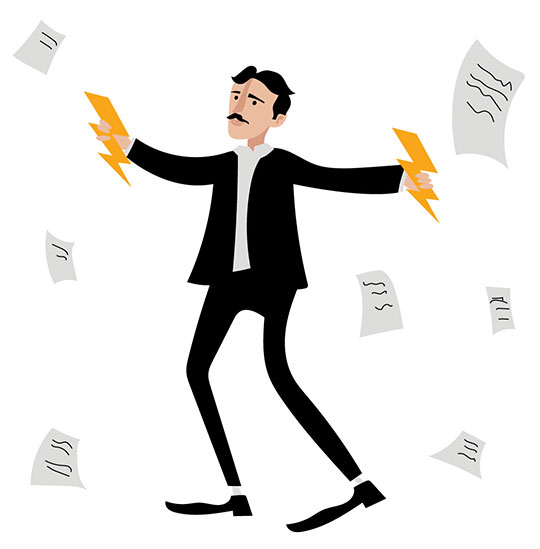

4. Tesla is still classified
Though much of his research and personal effects were eventually returned to surviving family members, or donated to museums for posterity, Tesla’s possessions were confiscated by the Office of Alien Property (yes, that was really a thing) soon after his death. The infamous so-called “missing papers” of Tesla’s, including schematics for a rumoured “death ray” technology, are considered by some to remain a classified asset of the U.S. government.
5. Tesla wasn’t infallible
Many of his ideas were brilliant and ultimately workable, but not all of them. One example was an 185-foot tower built on Long Island to suck electricity out of the air and send it through the earth. It did not work, Tesla eventually became broke, and the tower was torn down in 1917.

6. Tesla really cared
Tesla may have been a man of science, but he was also an environmentalist and humanist who believed energy sources should be renewable, and who placed the good of humanity as a whole above his own personal gain. The latter attitude, while noble, worked against him more often than not—as documented in Tesla’s Monumental Genius: The First to Tap the Power of Niagara Falls.

7. Tesla was a pool shark and a high roller
Like the hustlers in The Colour of Money, Tesla was an accomplished pool player who played almost every night, regularly pocketing a few quarters each time—about $15 in today’s money. He also lived at the Waldorf Astoria at the height of his popularity and success, although his fortunes turned later in life.

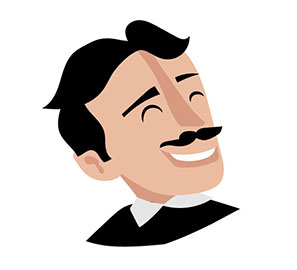
8. Tesla was a funny guy
As a well-known personality, Tesla was friends or neighbours with quite a few other famous people in his day, including Rudyard Kipling and Mark Twain. He reportedly referred to the decorated writer Kipling as an “inkspiller” after having dinner with him, and gave Twain the scare of his life when he invited the famous novelist to try his “earthquake machine,” which had Twain literally running for the bathroom.
9. Tesla was obsessively compulsive
Unsurprising for a genius, Tesla had a few quirky habits of his own. He was a chronic insomniac and a germophobe, disliked round objects (he reportedly refused to speak to women who wore pearls), and couldn’t bear to touch hair, which must have been a tough one.

10. Tesla remembered everything he saw
A huge contributor to the Tesla mystique was undoubtedly his photographic memory, which meant he could recall or reproduce with uncanny detail, anything he saw—books, images, landscapes, people’s faces. He also reportedly was able to visualize his ideas in three dimensions (a real-life precursor to today’s previsualization technology), an invaluable asset as an inventor.
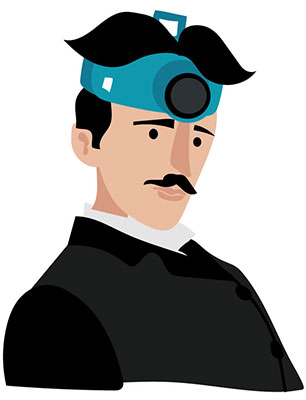

Download Tesla Art – Vector Based
For Commercial & Non-commercial Use
All Trinity Power Rentals BRANDING has been removed.
Article Sources:
https://en.wikipedia.org/wiki/Nikola_Tesla
http://www.exposingtruth.com/14-interesting-facts-know-nikola-tesla/ http://www.pbs.org/tesla/ll/ll_mispapers.html
https://www.pbs.org/newshour/science/5-things-you-didnt-know-about-nikola-tesla
http://www.sciencekids.co.nz/sciencefacts/scientists/nikolatesla.html
http://www.livescience.com/46720-nikola-tesla-158th-anniversary.html
Related Articles
Subscribe for access to exclusive content






